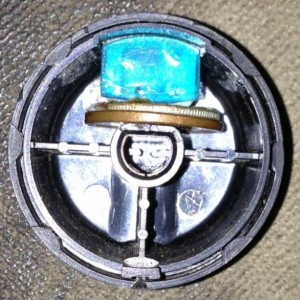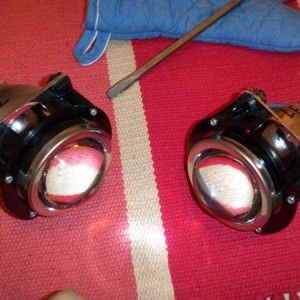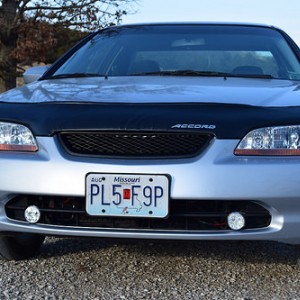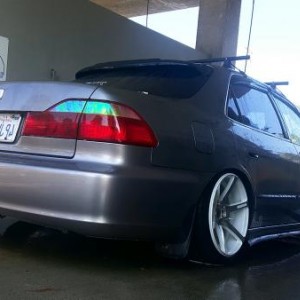It has 3 lobes, however, they're shaped like this. o0. When in low cam, it runs on more or less one lobe, the other opens just enough to prevent fuel from puddling behind the valve. This induces a swirl... good for burn... bad for POWA!!!
The high lobe, both valves open the same, which is where "power" comes from. Vtec swings into action anywhere from ~2800-3500 on our motors.
My turbo setup is hard coded at 2850, assuming my manifold pressure is at 0 vacuum, or higher. Below that, vtec won't swap over... But to do that, you have to be able to tune. Which Stock ecu doesn't do so hot.
Also, the exhaust doesn't have vtec... so no sweet sound when it swaps over.
So... I have to politely disagree... we do have vtec, it's just useless for power. I think BCK is referencing power vtec, which generally only comes out in the dohc vtec setups... where both sides have 3 lobes.
I always wondered by honda didn't do a setup with 1 lobe to operate both valves, that way intake and exhaust could both have vtec in our engines... HOWEVER, I'm no honda engineer... so what do I know.
And the Accord/element/crv k24 is more or less just like our "vtec" setup, where only the intake side has a "vtec" solution, again, setup for economy. The true Vtec show stoppers is the k20a k20z3, and k24a2 (RSX, CIVC SI 2006+, and my favorite TSX) Also, the Acura RDX is a k block with the bell housing mating setup for the J series tranny, it's valve train setup is the economy vtec implementation also. Acura engineers stated that the vtec on exhaust didn't offer any advantage...I think it was just cheaper to use. Otherwise all those K powered turbo sleds would axe the exhaust vtec rockers... but oh wait... they don't.







